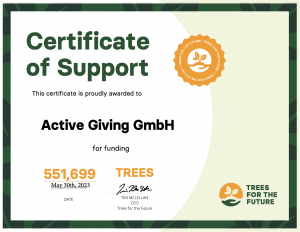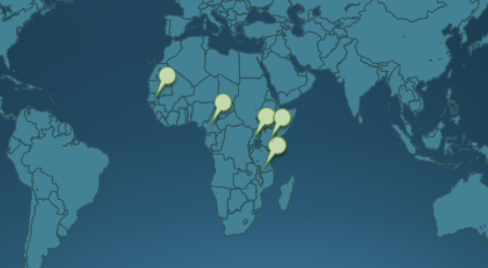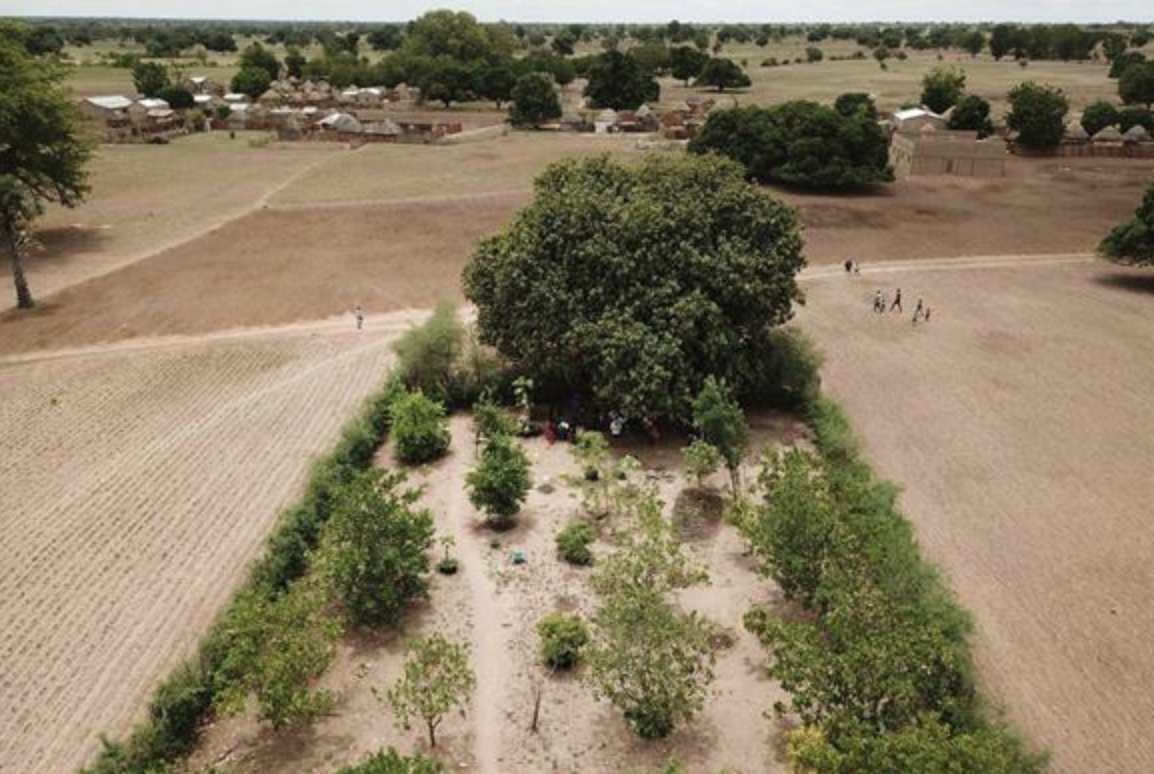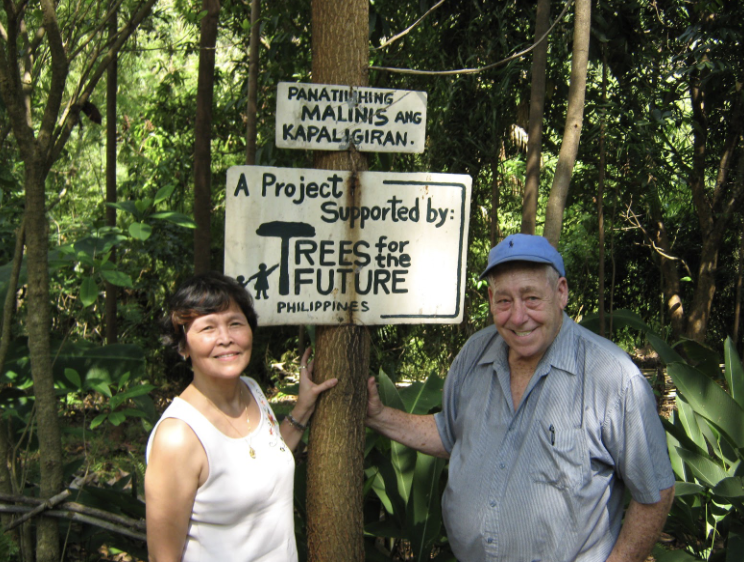
Active Giving Impact
551.699 trees

Introduction
Trees for the Future has the mission “to improve the livelihoods of impoverished farmers by revitalizing degraded lands”. The organization identifies farmers who need assistance and have a high likelihood of getting through the Forest Garden program. Trees for the Future is currently active in Cameroon, Kenya, Senegal, Uganda, and Tanzania. While the farmers provide land and labor, the training, seeds, and nursery supplies are provided by the nonprofit over four years.

Problem
Trees for the Future tackles various problems. The first issue is that the food system destroys 50 soccer fields of trees per minute. Most of this degradation occurs in the developing tropics of Africa, Latin America, and South and Southeast Asia. In these areas millions of chronically-hungry, smallholder farming families use destructive agricultural practices that degrade the soil, which results in the second problem: the limited supply of nutritions for families and communities.
Solution
The solution for the problem is called the “Forest Garden Program”, a scalable solution to restore degraded land and provide nutritional and financial safety. Trees for the Future chooses farmers with their own land, who are trained over a four year period to sustainably revitalize their land, by providing training, seeds, tools, and materials which are required for this approach. Within the Forest Garden Programm thousands of trees are planted to protect the soil and bring the nutrients back. This enables the farmers to grow a variety of fruits and vegetables, which can increase their income by 400% and creates food security. With higher incomes and food security, farmers are enabled to send their children to school.

The Forest Garden Program consists of four steps:
- “Protection”: this step is pursued in the first two years, where farmers learn how to protect, stabilize and segment their field by growing “fertilizer” trees and growing a protective barrier. The “Living Fence” keeps livestock and other pests out, protects the field from weather extremes and generates additional products that people can use or sell.
- “Diversification”: from the second to third the farmers learn to plant and grow vegetable and fruit tree portfolios to meet the family’s priority nutritional needs and market opportunities over the year.
- “Optimization”: in the final year the farmers are trained towards efficiently spacing trees and plants.
- “Graduation”: in this step the farmers develop a sustainable strategy to stay self-sufficient.
Impact
Since 1989 Trees for the Future has been able to help 5.990 farmers, plant 187 million trees, restore over 28.000 acres of land and change 111.000 lifes. The Forest Garden Program sequestered 2,400,000 metric tonnes of CO2 from the atmosphere.
History
Trees for the Future was founded by Dave Deppner, who developed his interest towards sustainable land management in the early 1970s. After the foundation of the organization, he became the Executive Director in August 1989. In March 1994 he received the “Trusteeship Award” from the United Nations. The nonprofit planted 30 million trees by December 2003. In 2005, an agroforestry training program was launched and reached over 2000 trainers in four years. Since 2015 the organization has focused itself on the previously mentioned Forest Garden approach. In 2017 the “Forest Garden Training Center” was launched, which is an online platform for Forest Garden practitioners. The organization became a training partner with United Nations Institute for Training and Research in 2018.
